At some advanced equalizers you can find a Mid/Side option that, when selected, lets you equalize with two different channels. Now, what is that for and why would you want to use it?
In this post we will answer these questions and give you some practical examples:
What Is MID/SIDE EQ?
The MID/SIDE EQ is a processing technique that separates the stereo field into two, so you can have individual control over each channel:
1. MIDS:
What sounds on the middle of the stereo field.
When the mids are boosted, the listener perceives a more centered (mono) sound.
2. SIDES:
What sounds on the right and left sides of the stereo field.
When the sides are boosted, the listener perceives a more spacious (wider) sound.
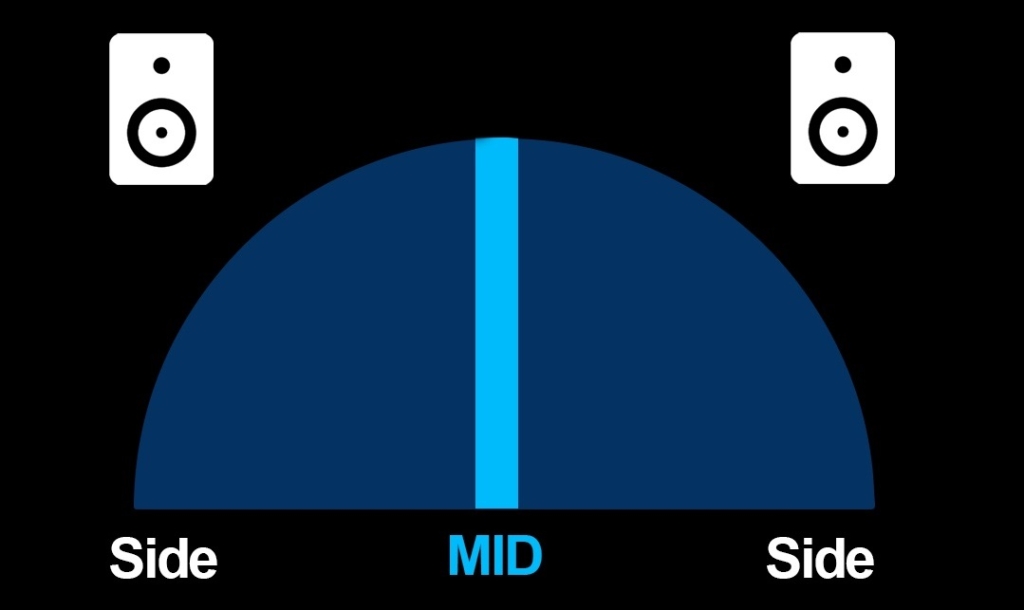
In Ableton Live’s EQ Eight you can separate the stereo field by choosing the M/S mode and then selecting the S or M option in order to edit either the sides or the mids independently:
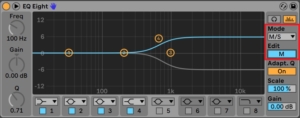 Select the M Edit when you want to edit the Mids
Select the M Edit when you want to edit the Mids
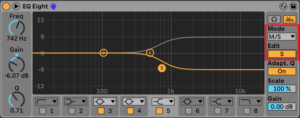 Select the S Edit when you want to edit the Sides
Select the S Edit when you want to edit the Sides
So, once you can EQ the mids separately from the sides, and vice versa, you have more control over the sound. What can you do with that?
If you want to get more space and depth in your mix this mixing course will help you get there and get your mix up to that professional level.
When Is It Useful To Apply It?
The MID/SIDE EQ processing will become very useful when you are mastering your tracks. Another common situation is when equalizing your all-in-one-track complex instruments, such as drums, with no possibility of separating its different parts individually.
Here you have three different examples of use:
1. Give presence to some elements over others that are in the same frequency range.
Imagine that you have a track in which the vocals do not have enough presence and are too buried in the mix.
You could try using a standard EQ curve at some of the mid frequencies to add some presence to those vocals. But, such procedure would also be adding presence to all the elements at that same frequency range which you do not actually want to boost:
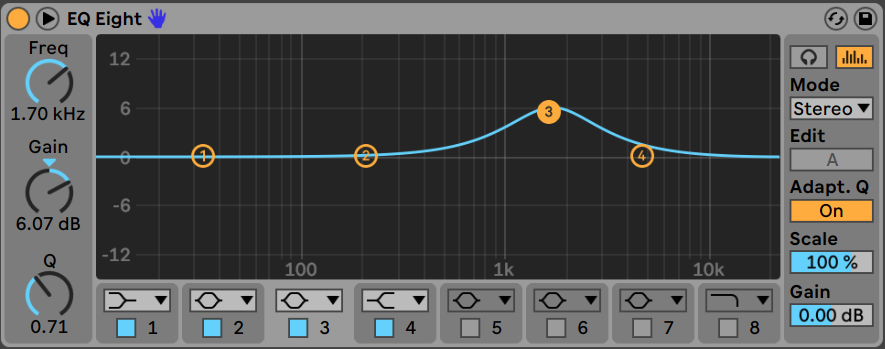
A much more effective way to solve this situation is using a MID/SIDE procedure. Since the vocals are panned to the center, we are going to boost just the Mids while leaving the Sides as they are, so other synths, high percussive sounds, etc. remain unaffected:
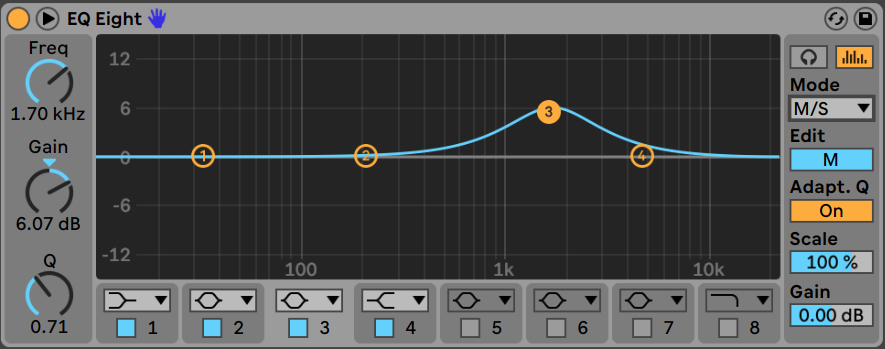
Another example: imagine it is the hi-hats that need extra presence. Since you know that you panned the hi-hats to the left and right of the stereo field, you are going to boost the sides only. Or if you think they have too much presence, you may just cut them a bit.
2. Widen the mix on the top end
A more general effect you may looking for is that of giving the track a wider spread so it breaths better.
You can achieve that by using MID/SIDE EQ and boosting the sides of the high frequencies with a high shelf while simultaneously cutting the mids:
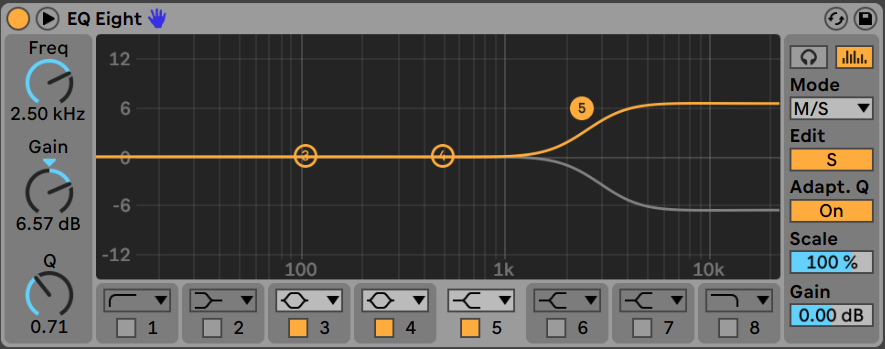
Why would we cut the mids the same amount as we are boosting the sides? This helps maintain the same spectral balance of the track.
However, the sides have been turned up and stereo image has been effectively widened on the top end of the mix.3. Give depth to the mix on the low mids
To see more on EQ’ing your sounds to give space and width we recommend you check out this full guided masterclass on achieving this professional sound
This is a way to increase the sense of space of your track in two easy steps.
First, have a high pass filter cutting all the stereo content of the low frequency range. Making the low end mono will remove muddiness from your mix and will make it sound more balanced.
To see more on getting a better and tighter low end this free masterclass chapter will help you achieve this!
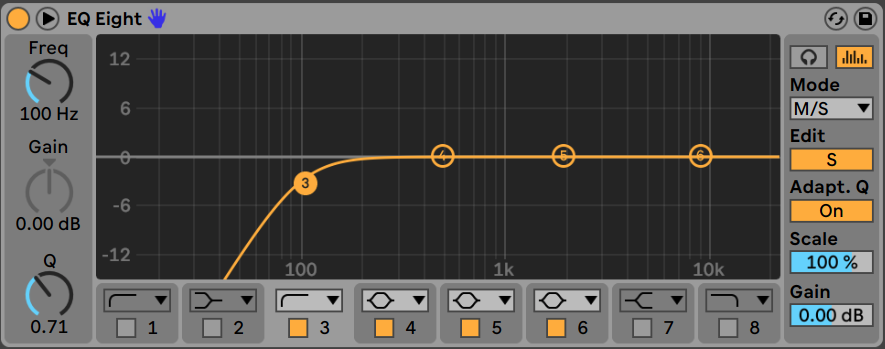
Secondly, give a gentle wide boost to the low mid region of the side channel. Turning up the stereo content of this region in this way, will increase the sense of space and depth of your track without worrying about the low end.
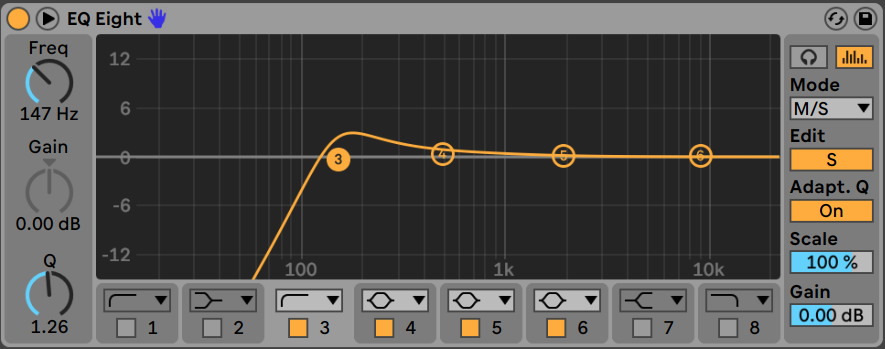
So now you know what MID/SIDE EQ is and have seen many different examples of how to use it, we hope you can take advantage of this technique to apply it when needed in your future tracks.






 50 Industry Music Production Tips You Must Know
50 Industry Music Production Tips You Must Know




